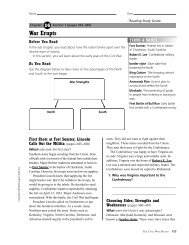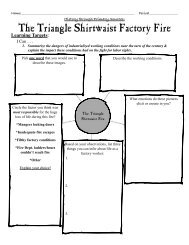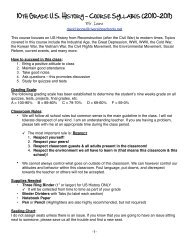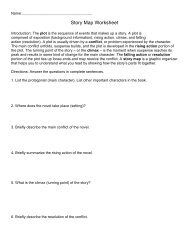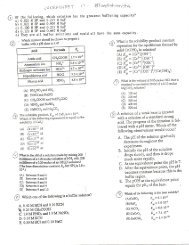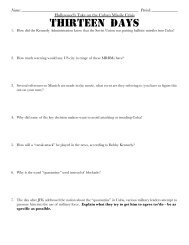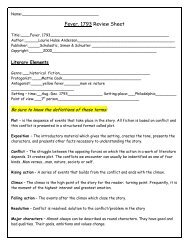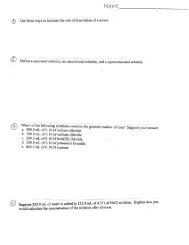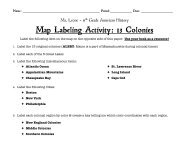Chapter 16 Text
Chapter 16 Text
Chapter 16 Text
Create successful ePaper yourself
Turn your PDF publications into a flip-book with our unique Google optimized e-Paper software.
We can think of pro ton-transfer reactions as being governed by the relative<br />
abilities of two bases to abstract protons. For example, consider the proton transfer<br />
that occurs when an acid HX dissolves in water:<br />
H2O(/) [<strong>16</strong>.9]<br />
If H2O (the base in the forward reaction) is a stronger base than X (the conjugate<br />
base of HX), then H2O will abstract the proton from HX to produce H3O+<br />
and X~. As a result, the equilibrium will lie to the right. This describes the behavior<br />
of a strong acid in water. For example, when HC1 dissolves in water, the solution<br />
consists almost entirely of H3O+ and Cl~ ions with a negligible concentration<br />
0fHCl molecules.<br />
<strong>16</strong>.2 Br0nsted-Lowry Acids and Bases 619<br />
HClfc) + H20(/) [<strong>16</strong>.10]<br />
H2O is a stronger base than Cl (Figure <strong>16</strong>.4), so H2O acquires the proton to<br />
become the hydronium ion.<br />
When X" is a stronger base than H2O, the equilibrium will lie to the left.<br />
This situation occurs when HX is a weak acid. For example, an aqueous solution<br />
of acetic acid (HC2H3O2) consists mainly of HC2H3O2 molecules with only a relatively<br />
few H3O+ and C2H3O2~ ions.<br />
HC2H3O2(a?) + H2O(I) ^^ H3O+(fl



